Explore Xi’an - China Travel, Asia
Welcome to Xi'an, a captivating city that offers a blend of ancient history and modern charm. Known as one of China's oldest cities, Xi'an is a treasure trove of cultural heritage and historical wonders. From its role as the starting point of the Silk Road to its impressive collection of ancient relics, Xi'an invites travelers to embark on a journey through time. Whether you're a history buff, a foodie, or an adventure seeker, Xi'an has something for everyone. Prepare to visit a city where the past and the modern dwell together.
Population: Approximately 13 million in 2020.
Economy: One of China’s Four Great Ancient Capitals and is the largest metropolitan economy of Shaanxi Province.
Landmarks: Famous for The Great Wall of China, The Forbidden City, and Beijing Olympic Park.
China

Overview of Xi’an
History & Culture Influence
Xi'an's history spans over 3,000 years, with its heyday during the Tang Dynasty when it served as the capital of China. This ancient city played a pivotal role in Chinese history, serving as the starting point of the Silk Road, which facilitated trade and cultural exchange between East and West. The city's rich cultural heritage is evident in its numerous historical sites and monuments. The Terracotta Army, a collection of life-sized statues buried with China's first emperor, Qin Shi Huang, is a testament to Xi'an's imperial past. The ancient City Wall, one of the world's best-preserved city walls, provides insight into the city's defensive design as well as breathtaking views of Xi'an's cityscape.
Interaction with The Locals
Xi'an, one of China's oldest cities and the capital of Shaanxi Province, has a population of approximately 12 million people, mostly locals and migrants, which reflects its status as a significant economic and educational hub. This bustling metropolis is a melting pot of diverse cultures and ethnic groups, contributing to its rich history and culture. The locals are known for their hospitality, warmth, and are eager to share their stories and traditions. Engaging with them provides visitors a deeper understanding of the city's culture and daily life.
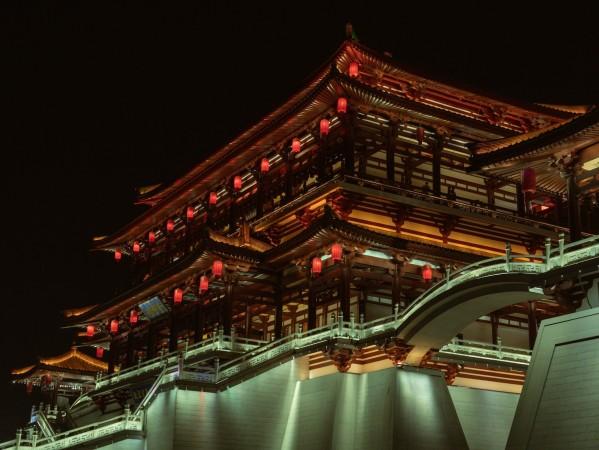
Great City Wall of Xi'an - © Prince Wong
Top Attractions in Xi’an
Terracotta Army
The Terracotta Army is a must-see attraction in Xi'an. Discovered in 1974, this army of life-sized warriors, horses, and chariots was buried with Emperor Qin Shi Huang to protect him in the afterlife. The level of detail in each figure is astounding, making it a must-see marvel.
City Wall of Xi’an
The historic City Wall of Xi'an is a spectacular edifice that surrounds the old city. Built during the Ming Dynasty, it stretches over 13 kilometers and offers breathtaking views. Visitors can walk, bike, or even take a small electric cart around the wall, soaking in the historical ambiance.
Big Wild Goose Pagoda
This iconic pagoda was built in the 7th century during the Tang Dynasty. It was initially constructed to house Buddhist scriptures brought from India. Today, it stands as a symbol of Xi'an's religious heritage and offers a serene spot for reflection and photography.
Shaanxi History Museum
For those keen on delving deeper into the region's history, the Shaanxi History Museum is a treasure trove of artifacts. From ancient pottery to exquisite jade carvings, the museum's collection provides a comprehensive overview of Xi'an's historical significance.
Mount Huashan
Adventure seekers will love a trip to Mount Huashan, one of China's Five Great Mountains. Known for its steep trails and stunning vistas, it's a perfect spot for hiking and outdoor activities. The views from the peaks are nothing short of spectacular.
Bell Tower and Drum Tower
Located in the heart of Xi'an, the Bell Tower and Drum Tower are iconic symbols of the city. The Bell Tower, built in 1384 during the Ming Dynasty, was used to signal the time and alert the city in case of emergencies. The Drum Tower, constructed in 1380, houses large drums that were used to mark the passing of the hours. Both towers offer panoramic views of the city and showcase traditional Chinese architecture.
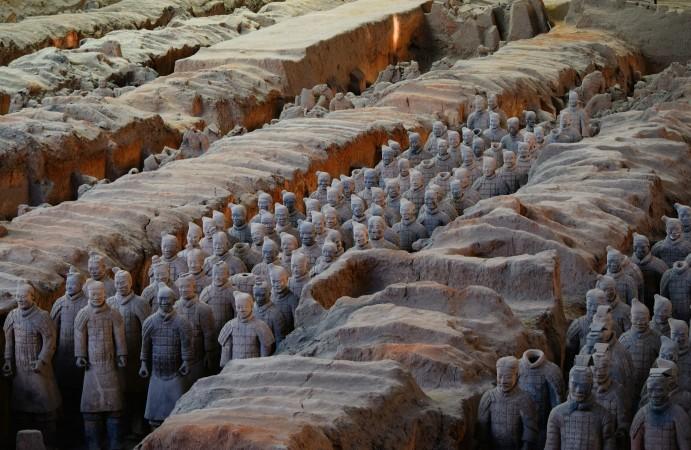
Terracotta Army - © Aaron Greenwood
Must-Try Dishes in Xi’an
Biang Biang Noodles
Biang Biang noodles are a local favorite, known for their thick, wide shape and chewy texture. These hand-pulled noodles are frequently served with a spicy, savory sauce consisting of chile oil, soy sauce, and other seasonings. Topped with vegetables and meat, Biang Biang noodles are a hearty and satisfying dish that embodies the bold flavors of Shaanxi cuisine.
Roujiamo (Chinese Burger)
Often referred to as the Chinese burger, Roujiamo consists of a flatbread stuffed with tender, seasoned meat, typically pork or beef. The beef is slow-cooked with a spice combination until juicy and delicious. This street food staple is a must-try for visitors seeking a quick and delicious snack while exploring Xi'an.
Yangrou Paomo (Lamb Soup)
Yangrou Paomo is a traditional Xi'an dish that features crumbled flatbread soaked in a rich lamb broth. The soup is typically garnished with lamb meat, clear noodles, and a variety of condiments such as pickled garlic and chili paste. This hearty dish is perfect for warming up on a chilly day and provides a unique taste of Xi'an culinary traditions.
Dumplings (Jiaozi)
Xi'an is famous for its dumplings, which come in a variety of shapes and flavors. These delicate parcels are filled with ingredients such as minced pork, shrimp, and vegetables. Dumplings are often enjoyed during festive occasions and can be steamed, boiled, or fried. A popular variation is the Tangbao, a soup dumpling that bursts with delicious broth.
Muslim Quarter Delicacies
The Muslim Quarter in Xi'an is a food lover's paradise. Here, you can savor a wide array of halal dishes, including lamb skewers, sesame seed cakes, and fried rice with mutton. The blend of Chinese and Muslim culinary traditions results in a vibrant and diverse food scene that should not be missed.
Cold Noodles (Liangpi)
Liangpi, or cold noodles, is a popular street food in Xi'an, especially during the summer. Made from wheat or rice flour, these noodles are served cold with a tangy, spicy sauce made from vinegar, chili oil, garlic, and soy sauce. Often topped with shredded cucumber, bean sprouts, and sometimes peanuts, Liangpi is refreshing and full of flavor.
Qishan Minced Noodles (Qishan Saozi Mian)
Qishan Saozi Mian is a traditional Shaanxi noodle dish named after Qishan County. These hand-pulled noodles are served in a rich broth made from pork or beef, tofu, and vegetables. The broth is seasoned with garlic, ginger, and a unique blend of spices, giving it a distinctive and aromatic flavor. This recipe is substantial and filling, ideal for a cozy supper.
Persimmon Pancakes (Shi Zi Bing)
Shi Zi Bing, or persimmon pancakes, are a popular local treat made from ripe persimmons mixed with flour and filled with sweet or savory ingredients. These pancakes are crispy on the outside and soft on the inside, offering a delightful combination of textures and flavors. They're frequently eaten as a dessert or sweet snack.
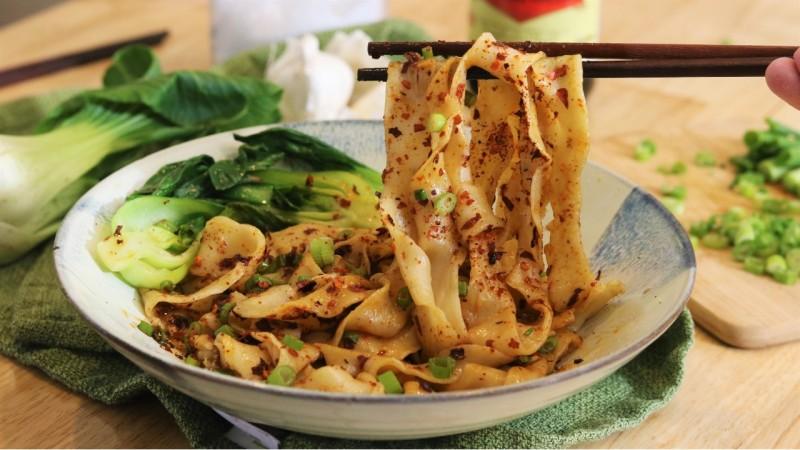
Biang Biang Noodle - © Curated Kitchenware
Festivals & Local Celebrations
Chinese New Year
Chinese New Year, also known as the Spring Festival, is the most important traditional festival in Xi'an. The city comes alive with vibrant decorations, fireworks, and cultural performances. Families gather to celebrate with festive meals, and the streets are filled with markets selling New Year goods and treats.
Lantern Festival
The Lantern Festival marks the end of the Chinese New Year celebrations and is celebrated with stunning displays of lanterns throughout Xi'an. The festival's centerpiece is the Dragon and Lion dances, which are done to bring good luck and wealth. Visitors can join the festivities and admire the intricate designs of the illuminated lanterns.
Dragon Boat Festival
The Dragon Boat Festival, celebrated on the fifth day of the fifth lunar month, honors the Chinese poet Qu Yuan. In Xi'an, the festival is celebrated with dragon boat races on the city's waterways. People also prepare and enjoy Zongzi, sticky rice dumplings wrapped in bamboo leaves, as part of the tradition.
Xi'an International Horticultural Exposition
The Xi'an International Horticultural Exposition is a great event that displays a wide variety of flowers, plants, and gardening methods from all over the world. Held periodically, this expo features stunning garden displays, cultural performances, and educational workshops. It's a fantastic event for nature lovers and those interested in horticulture.
City Wall Marathon
The Xi'an City Wall Marathon is a unique sporting event that attracts runners from all over the world. Participants have the opportunity to run along the ancient City Wall, enjoying scenic views and the historical ambiance. This marathon is a blend of physical challenge and cultural experience, making it a memorable event for all.
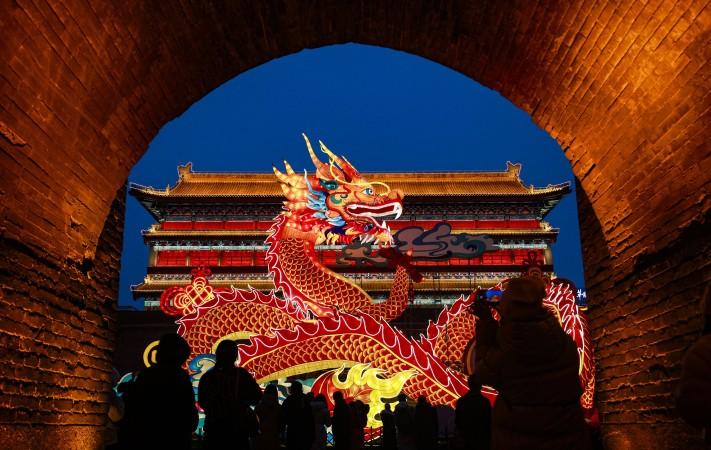
Xian Lantern Festival - © CNN
What to Do in Xi’an
- Hiking Mount Huashan: Mount Huashan, one of China's Five Great Mountains, offers exhilarating hiking trails and breathtaking views. Known for its steep paths and narrow plank walks, it's a perfect adventure for thrill-seekers. The mountain's peaks provide stunning panoramas and a sense of accomplishment for those who reach the top.
- Cycling on the City Wall: Cycling along Xi'an's ancient City Wall is a popular activity that allows visitors to explore the historic structure while enjoying panoramic views of the city. Bicycles are available for rent, and the entire loop takes about 1-2 hours to complete. It's a fun and active way to experience Xi'an's history and architecture.
- Calligraphy Classes: Take a calligraphy lesson to get deeper engaged in Chinese culture. Learn the art of brush strokes and traditional Chinese characters from skilled instructors. These classes provide a hands-on experience and a deeper appreciation of China's rich literary heritage.
- Traditional Tea Ceremonies: Enjoy the elegance and tranquility of a traditional Chinese tea ceremony. Local tea houses in Xi'an offer ceremonies where you can learn about the history and techniques of tea preparation. Enjoy a variety of teas and the calming atmosphere as you participate in this ancient ritual.
- Night Market Exploration: Xi'an's night markets are bustling hubs of activity, offering a wide range of local snacks, souvenirs, and entertainment. Stroll through the markets, sample delicious street food, and shop for unique gifts. The lively atmosphere and vibrant energy make it a must-visit experience for any traveler.
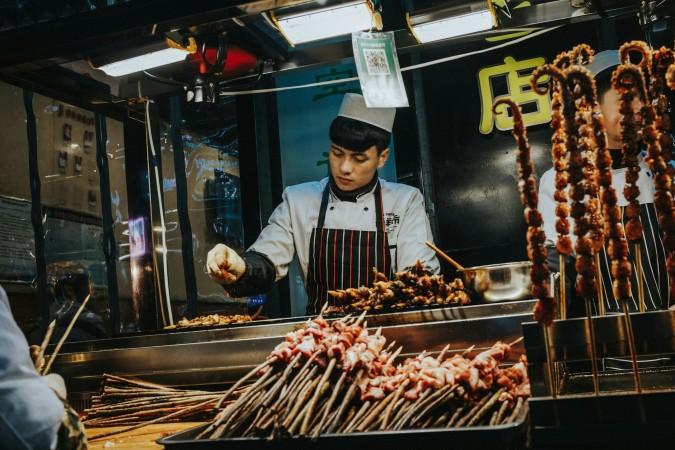
Explore Xi'an Night Market - © Xiaolong Wong
Shopping in Xi’an
- Muslim Quarter: The Muslim Quarter is not only famous for its food but also for its vibrant shopping scene. Here, you can find a variety of traditional handicrafts, souvenirs, and local specialties. Browse through stalls selling calligraphy scrolls, paper cuttings, and jade jewelry. The bustling atmosphere and unique items make it a perfect place to pick up gifts and mementos.
- Beiyuanmen Street: Beiyuanmen Street, located in the Muslim Quarter, is a popular shopping destination. This pedestrian street is lined with shops offering a mix of traditional and modern goods. From clothing and accessories to tea sets and pottery, there's something for everyone. Don't miss the opportunity to bargain for a good deal and take home a piece of Xi'an's culture.
- Xi'an Antique Market: For those interested in antiques and collectibles, the Xi'an Antique Market is a treasure trove of items from various periods. Explore stalls filled with ancient coins, pottery, paintings, and furniture. Whether you're a serious collector or just looking for a unique souvenir, this market offers a fascinating glimpse into China's past.
- Modern Shopping Malls: Xi'an is home to several modern shopping malls that offer a wide range of international and local brands. Popular malls like Century Ginwa Shopping Mall and Zhongda International Shopping Mall provide a mix of high-end boutiques, fashion stores, and dining options. These malls offer a comfortable and convenient shopping experience for visitors.
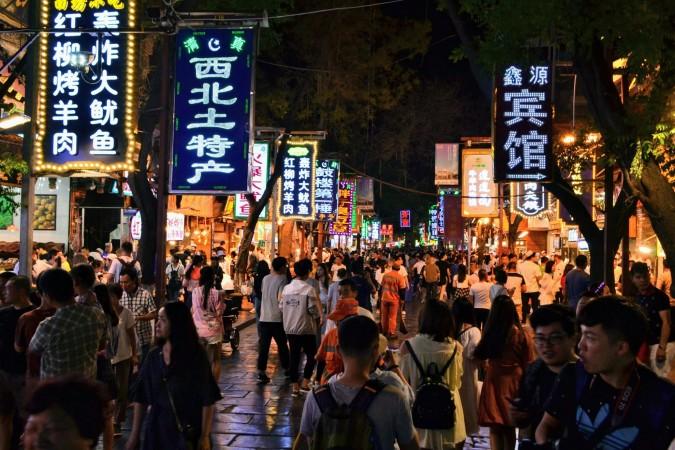
Shopping at Muslim Quarter - © Kunal Kalra
Weather in Xi’an: Best Time to Visit
Spring in Xi’an
- Weather: Spring in Xi'an is mild and pleasant, with temperatures ranging from 10°C to 20°C (50°F to 68°F). This season sees a rise in tourists who come to enjoy the blooming flowers and lush greenery. Popular attractions like the Terracotta Army and the Ancient City Wall are less crowded compared to the peak summer season.
- Tourism Trend: The comfortable weather makes it ideal for outdoor activities, such as exploring the Big Wild Goose Pagoda and cycling along the City Wall. However, occasional dust storms can occur, so it's advisable to check the weather forecast before planning your day.
Summer in Xi’an
- Weather: Summers in Xi'an can be quite hot, with temperatures often exceeding 30°C (86°F). The humidity may make things feel even warmer.
- Tourism Trend: Despite the heat, this season is bustling with tourists, particularly families on summer vacation. If you visit during summer, be sure to stay hydrated, wear sunscreen, and take breaks in shaded or air-conditioned areas. Early morning or late afternoon visits to outdoor sites are recommended to avoid the peak heat.
Autumn in Xi’an
- Weather: Autumn is considered the finest season to visit Xi'an, with temperatures ranging from 15°C to 25°C (59°F to 77°F). The city is bathed in golden hues as the leaves change color, creating picturesque scenes perfect for photography.
- Tourism Trend: This season attracts many tourists who enjoy exploring historical sites and participating in outdoor festivals. The pleasant weather is ideal for visiting the Huaqing Hot Springs and Mount Huashan. Autumn is also the time for cultural festivals like the Xi'an Ancient Culture and Art Festival, which draws both locals and tourists.
Winter in Xi’an
- Weather: Winters in Xi'an are cold, with temperatures dropping to around 0°C (32°F) or lower. Snowfall is not uncommon, adding a magical touch to the ancient city. While the cold might deter some, winter offers a quieter, more serene experience with fewer tourists.
- Tourism Trend: This is an excellent time to explore indoor attractions and enjoy the local cuisine in a cozy restaurant. The Chinese New Year festivities in January or February bring a lively atmosphere to the city with traditional performances and markets. Dress warmly and take advantage of off-peak travel deals.
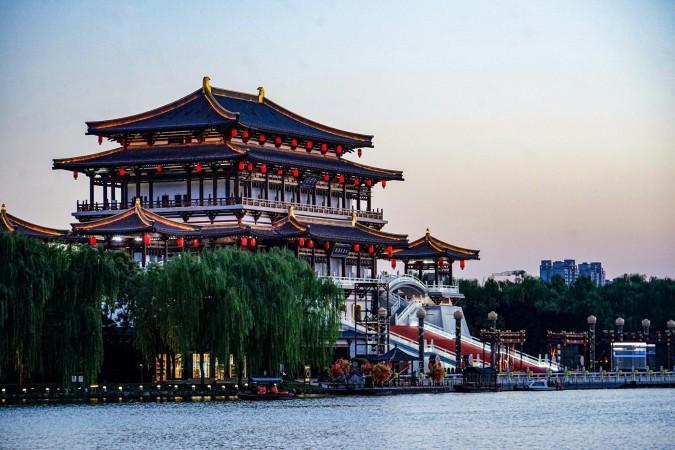
Xi'an Summer Palace - © Jeremy Huang
Essential Travel Information
Getting Around Xi'an
Xi'an offers a variety of transportation options to suit different needs. The city's extensive public bus network is affordable and covers most areas, though it can be crowded during peak hours. The efficient Xi'an Metro connects major attractions and business districts, with easy ticketing at station machines. Taxis and ride-hailing services provide convenient travel for shorter trips or with luggage, but ensure fares are agreed upon beforehand. For a more leisurely exploration, renting bicycles or e-bikes is a great eco-friendly choice, especially for cycling along the City Wall or through parks.
ATM & Banking Services
ATMs are widely available throughout Xi'an, particularly in tourist areas, shopping centers, and near major attractions, and most accept international cards like Visa, MasterCard, and UnionPay. However, it's advisable to carry some cash, as smaller vendors and restaurants might not accept cards. Currency exchange services are accessible at banks, hotels, and airports, making it convenient to exchange a small amount of currency upon arrival for immediate expenses.
Where to Stay in Xi'an
Xi'an offers a diverse range of accommodation options to suit every traveler's needs. Luxury hotels in the city provide top-notch amenities, exceptional service, and often include fine dining and spa facilities, making them perfect for both leisure and business travelers. Boutique hotels offer a unique and personalized experience, blending modern comforts with traditional Chinese decor. For budget-conscious travelers, there are numerous affordable hotels and hostels that provide clean and comfortable rooms at reasonable prices, often near major attractions.
Articles for you

Explore Luang Prabang - Laos Travel, Asia
Luang Prabang, nestled in northern Laos at the meeting point of the Mekong river and Nam Khan river, is a city celebrated for its rich cultural heritage and stunning natural beauty. Recognized as a UNESCO World Heritage Site in 1995, it boasts a unique blend of traditional Lao and French architecture that has been carefully preserved. Whether you're wandering through its ancient temples, admiring the local architecture, or soaking in the natural beauty of waterfalls and rivers, Luang Prabang offers something for everyone.
Population: Approximately 470,000 in 2020.
Economy: Luang Prabang's economy thrives on tourism, with its UNESCO status drawing visitors to its temples, natural wonders, and cultural experiences. Local crafts, hospitality, and small businesses also play vital roles, supporting the town's sustainable growth. Local crafts, hospitality, and small businesses also play vital roles, supporting the town's sustainable growth.
Landmarks: Famous for the Wat Xieng Thong, Royal Palace Museum (also known as Haw Kham), and Mount Phousi (Phou Si Hill).Luang Prabang, nestled in northern Laos at the meeting point of the Mekong river and Nam Khan river, is a city celebrated for its rich cultural heritage and stunning natural beauty. Recognized as a UNESCO World Heritage Site in 1995, it boasts a unique blend of traditional Lao and French architecture that has been carefully preserved. Whether you're wandering through its ancient temples, admiring the local architecture, or soaking in the natural beauty of waterfalls and rivers, Luang Prabang offers something for everyone.
Population: Approximately 470,000 in 2020.
Economy: Luang Prabang's economy thrives on tourism, with its UNESCO status drawing visitors to its temples, natural wonders, and cultural experiences. Local crafts, hospitality, and small businesses also play vital roles, supporting the town's sustainable growth. Local crafts, hospitality, and small businesses also play vital roles, supporting the town's sustainable growth.
Landmarks: Famous for the Wat Xieng Thong, Royal Palace Museum (also known as Haw Kham), and Mount Phousi (Phou Si Hill).

Explore Vientiane - Laos Travel, Asia
Vientiane, the capital of Laos, offers a unique travel experience for those looking to explore a peaceful Southeast Asian city with a deep connection to its cultural roots. Unlike other bustling capitals, Vientiane boasts a serene and laid-back atmosphere, making it a perfect destination for travelers wanting to escape the chaos of more crowded cities. This charming city sits along the Mekong River, offering scenic views, rich history, and a vibrant yet tranquil way of life. As a gateway to exploring Laos, this capital invites you to slow down, immerse in its heritage, and enjoy the local flavors.
Population: Approximately 840,000 in 2023.
Economy: Vientiane's economy is growing steadily, driven by government services, trade, and tourism. Key sectors include agriculture, manufacturing, and construction. The city's strategic location along the Mekong River supports trade with neighboring Thailand and Vietnam.
Landmarks: Famous for the Pha That Luang, Patuxai, and the Buddha Park (or Wat Xieng Khuan).

Explore Zanzibar - Tanzania Travel, Africa
Zanzibar, an enchanting archipelago in the Indian Ocean, lies about 40 kilometers off Tanzania’s eastern coast. Comprising several islands, with Unguja (commonly known as Zanzibar Island) and Pemba Island being the largest, Zanzibar is celebrated for its stunning beaches, rich cultural heritage, and historical significance. Just south of the equator, this tropical paradise enjoys a warm climate year-round, attracting visitors with its blend of African, Arab, and Indian influences. Whether exploring spice farms, snorkeling in crystal-clear waters, or savoring local dishes like biryani and Zanzibar pizza, travelers find Zanzibar a captivating destination.
Population: Estimate 30,000 people in 2024
Economy: Zanzibar's economy relies heavily on tourism, agriculture, and fishing. The island is known for its spice production, particularly cloves, and attracts visitors with its rich culture and beautiful beaches. Tourism is the largest contributor, driving growth and development.
Landmarks: Famous for the Stone Town, Prison Island ( or Changuu Island), and the Jozani Forest (an important part of the Jozani Chwaka Bay National Park).

Explore Arusha - Tanzania Travel, Africa
Arusha, nestled at the base of Mount Meru in northern Tanzania, is the gateway to some of Africa's most iconic national parks, including the Serengeti and Ngorongoro Crater. Known as the "Safari Capital," this bustling city boasts a vibrant blend of cultures, with influences from indigenous African, Arab, and Indian communities that enrich its lively markets and diverse culinary scene. With its temperate climate, rich history, and dynamic population, Arusha is a must-visit destination for those looking to explore the heart of Tanzania's northern safari circuit.
Population: Estimate 700,000 people in 2024
Economy: Arusha's economy thrives on tourism, agriculture, and small-scale trade. As the gateway to major national parks like Serengeti and Kilimanjaro, it attracts safari-goers. Coffee and flower farming also contribute significantly to its local and export markets.
Landmarks: Famous for Mount Meru, Arusha National Park, and the Chemka Hot Springs.

Explore Loikaw - Myanmar Travel, Asia
Nestled in the heart of Kayah State, Loikaw is a hidden gem waiting to be discovered. For travelers seeking an authentic experience, this small yet culturally rich city offers a unique window into Myanmar’s lesser-known beauty. Located in Southeast Myanmar, Loikaw remains relatively untouched by mass tourism, making it an ideal destination for those looking to explore off the beaten path. From stunning landscapes to rich cultural traditions, Loikaw tourism promises visitors an enriching adventure where they can immerse themselves in the vibrant local life, breathtaking views, and historical landmarks.
Population: Approximately 51,000 in 2019.
Economy: Loikaw's economy is primarily based on agriculture, with rice, corn, and millet as main crops. Traditional crafts and tourism are also growing sectors, contributing to the region's economic development.
Landmarks: Famous for the Dhow Shipyard, Ras Al Jinz Turtle Reserve, and the Al Ayjah Lighthouse.

Explore Matsumoto - Japan Travel, Asia
Nestled in the heart of Nagano Prefecture, Matsumoto is a captivating city that offers a blend of traditional Japanese charm and stunning natural beauty. Surrounded by the majestic Japanese Alps, it’s the perfect destination for travelers seeking an authentic and peaceful experience. From its iconic Matsumoto Castle to its vibrant local festivals, Matsumoto is a destination that caters to all kinds of travelers. The city offers the warmth of small-town Japan, with friendly locals and breathtaking landscapes waiting to be explored. Let's dive into everything that makes Matsumoto a must-visit destination for your next trip to Japan.
Population: Approximately 240,000 in 2019.
Economy: Matsumoto's economy focuses on a mix of tourism, agriculture, and local craftsmanship. The city is known for wasabi farming, traditional arts, and a growing role as a cultural and outdoor travel destination.
Landmarks: Famous for the Matsumoto Castle, Daio Wasabi Farm, and the Japan Ukiyo-e Museum.
